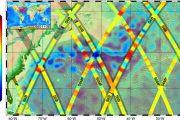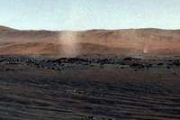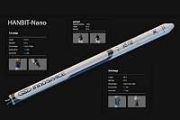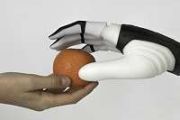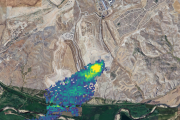
Copernical Team
NASA astronaut Jonny Kim, two cosmonauts dock with ISS
 A Soyuz rocket with NASA astronaut Jonny Kim and two Russian cosmonauts on board docked with the International Space Station early Tuesday, following a three-hour, 10-minute flight from launch in Kazakhstan.
Capture between the rocket and the orbiting space laboratory was confirmed at 4:57 a.m. EDT over western Russian.
The spacecraft with its three crew members on board launched
A Soyuz rocket with NASA astronaut Jonny Kim and two Russian cosmonauts on board docked with the International Space Station early Tuesday, following a three-hour, 10-minute flight from launch in Kazakhstan.
Capture between the rocket and the orbiting space laboratory was confirmed at 4:57 a.m. EDT over western Russian.
The spacecraft with its three crew members on board launched Weather satellite operational, completes fleet to forecast severe storms on Earth
 The final piece of an advanced series of weather satellites officially began operating Tuesday to help provide better forecasts on Earth and in space, according to the National Oceanic and Atmospheric Administration.
GOES-19 satellite replaces GOES-16 to cover the GOES East orbit 22,236 miles above Earth's equator. It also completes NOAA's Geostationary Operational Environmental Satelli
The final piece of an advanced series of weather satellites officially began operating Tuesday to help provide better forecasts on Earth and in space, according to the National Oceanic and Atmospheric Administration.
GOES-19 satellite replaces GOES-16 to cover the GOES East orbit 22,236 miles above Earth's equator. It also completes NOAA's Geostationary Operational Environmental Satelli Martian rock on the move

This new snapshot from the European Space Agency’s Mars Express deftly captures the two distinct faces of Mars: ridged and rugged versus smooth and unmarked.
NASA's Deep Space Network starts new dish, marks 60 years in Australia
This request seems a bit unusual, so we need to confirm that you're human. Please press and hold the button until it turns completely green. Thank you for your cooperation!
Press and hold the button
If you believe this is an error, please contact our support team.
185.132.36.159 : f581d105-600a-4142-811f-9b9fd2b7
Modeling lunar in-situ resource utilization can help plan future prototypes
This request seems a bit unusual, so we need to confirm that you're human. Please press and hold the button until it turns completely green. Thank you for your cooperation!
Press and hold the button
If you believe this is an error, please contact our support team.
185.132.36.159 : 3b622da8-32bd-4923-96cc-dbfb2f5f
Miso made in space tastes nuttier, researchers find
This request seems a bit unusual, so we need to confirm that you're human. Please press and hold the button until it turns completely green. Thank you for your cooperation!
Press and hold the button
If you believe this is an error, please contact our support team.
185.132.36.159 : f77ba383-d458-43fc-94a1-f246f3f0
How space law aims to regulate 'space junk' and protect Earth
This request seems a bit unusual, so we need to confirm that you're human. Please press and hold the button until it turns completely green. Thank you for your cooperation!
Press and hold the button
If you believe this is an error, please contact our support team.
185.132.36.159 : 4be690cf-8e8c-48b5-9e03-348280b9
Existing international law can help secure peace and security in outer space, study shows
This request seems a bit unusual, so we need to confirm that you're human. Please press and hold the button until it turns completely green. Thank you for your cooperation!
Press and hold the button
If you believe this is an error, please contact our support team.
185.132.36.159 : f73c0a5c-1dce-4a55-b84a-005c6320
United Launch Alliance and Amazon set first launch for SpaceX Starlink competitor Project Kuiper
This request seems a bit unusual, so we need to confirm that you're human. Please press and hold the button until it turns completely green. Thank you for your cooperation!
Press and hold the button
If you believe this is an error, please contact our support team.
185.132.36.159 : 59d0a06e-b146-4807-bf22-1642c4ab
Solar cells made of moon dust could power future space exploration
This request seems a bit unusual, so we need to confirm that you're human. Please press and hold the button until it turns completely green. Thank you for your cooperation!
Press and hold the button
If you believe this is an error, please contact our support team.
185.132.36.159 : cea664b0-c6c1-4307-8850-2c5c47f7



